 |
|

|
 |
TABLE of CONTENTS
 |
September flooding causes $64 million in damage |
By Beth Petrowske
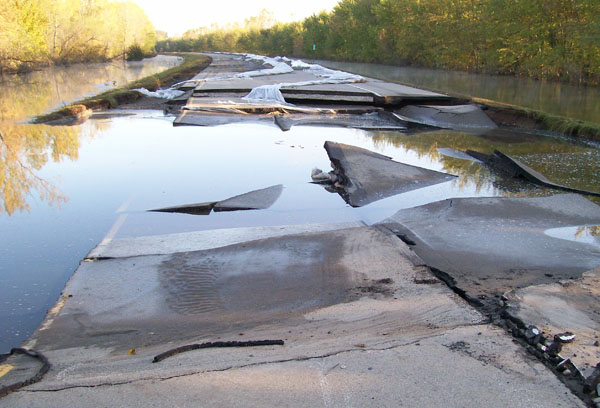
Water covers a flood-damaged section of Hwy 169 a few miles north of St. Peter. Photo by Thomas Zimmerman
|
Heavy rains totaling 6 to 10 inches bombarded southern Minnesota Sept. 22, causing major flooding and resulting in damage estimated at $64.1 million.
“Fall flooding is a not what we expect, but once again Mn/DOT personnel stepped up,” said Steve Lund, state maintenance engineer. “Whether it was our front line responders or the many supporting functions, Mn/DOT’s efforts were impressive—something we can all be proud of.”
Employees worked night and day with county and city engineers to create detour routes and direct traffic as conditions rapidly worsened. Sign crews literally ran out of signs because so many were needed to post detour routes and other emergency information.
“We witnessed a history-making flood with record-high water levels—and thankfully with no fatalities,” said Wes Smith, District 6 West Maintenance superintendent. “I have never seen rivers rise as fast, nor such a large geographic area inundated with so much water.”
During a 24- to 36-hour period, there were 95 state and local roads closed in southeastern Minnesota.
Nearly a dozen state roads were closed in District 7 due to flash flooding, according to Rebecca Arndt, District 7 public affairs coordinator. By the time the water receded and the roads reopened, nine roads again had to be closed near the Minnesota River when it began to flood. The Minnesota River crested above the 1965 record in the Henderson area and came close to the historical crest in Mankato.
“The river rose and receded quickly, but had high velocity,” Arndt said. “We had a variety of damage—shoulders washed away, a railing broke off of a historic bridge when a tree hit it, a 200-foot section of Hwy 169 washed out and collapsed, then the bituminous overlay peeled away from the concrete and floated into the median.”
Water covered several roads in District 8. A shoulder washout occurred on Hwy 14 near Lamberton. In addition, the southern portion of the Hwy 59 project south of Clarkfield may be delayed until next year due to flooding.
In the Twin Cities metro area, rising water from the Minnesota River flooded Hwy101 in Shakopee and Hwy 41 in Chaska. Water from the river also necessitated construction of a protective dike along northbound I-35W near the river crossing and on both sides of eastbound Hwy 101 in Savage, just east of Hwy169. Hwy 101 remained closed until Oct.12.
In addition to maintenance staff, many others aided in the relief efforts, including Public Affairs employees and Emergency Management staff.
Kristine Hernandez and Jessica Wiens, District 6 Public Affairs, served as public information officers for Wabasha County Flood Relief as part of the Homeland Security and Emergency Management deployment. Their biggest challenge was providing consistent and up-to-date messages to the public.
Employees from the Emergency Management Section and staff from the Federal Highway Administration Emergency Repair Program visited several flooded areas in District 6 to assess whether Mn/DOT would be eligible for federal emergency funding.
“Mn/DOT needed to show FHWA staff that we had at least $700,000 in damage to qualify for federal funds,” said Craig Strand, Emergency Management Section. “We visited several sites, including the Olmsted County Road 18 bridge near Oronoco where the entire north bridge approach washed away—the destruction was unbelievable.”
|
 |
|

|
 |
TABLE of CONTENTS
 |
Online tool provides steady stream of useful information |
By Beth Petrowske
Mn/DOT has a new survey tool that gathers information weekly from 600 Minnesotans who are part of an “online customer community.” Community members, who were selected to demographically reflect the Minnesota population, participate in online discussions, surveys, brainstorming sessions and chats on a multitude of transportation issues.
“The online community allows us to be nimble. We can post a survey, gather responses and have the data compiled in a report in about a month,” said Karla Rains, statewide market research manager. “This is significantly faster than using traditional methods.”
OLC participants are encouraged to complete an online survey, which changes weekly. The information gathered from these surveys is compiled and published online in Front Page Reports.
“The findings published provide an in-depth understanding of customer expectations, preferences and behaviors,” Rains said.
Survey topics to-date include construction, biking, pavement smoothness, roundabouts and overhead electronic signs.
An effective, dynamic tool
Last March the first survey was sent to OLC members to learn how members felt about Mn/DOT’s snow removal efforts. Using the OLC to gather this information allowed Mn/DOT to get timely feedback while memories of the recent winter were still fresh, Rains said. Mn/DOT’s Omnibus Survey, which is conducted by telephone each fall, had previously been used to gather this information.
Survey results showed that nine out of 10 customers’ expectations for snow and ice removal on Minnesota’s state roads are being met or exceeded.
“It is critical to know our customers' expectations and to know if our maintenance efforts are meeting those expectations,” said Steve Lund, state maintenance engineer. “The online community survey is a quick and effective tool to help us learn what our customers are thinking—it showed us that we are doing the right things with our winter maintenance services.”
In the future Lund plans to use the OLC as a means to find out how participants feel about other maintenance services.
The dynamic nature of the OLC also has allowed participants to suggest topics that Mn/DOT may have never considered and the technology opens lines of communication for candid online exchanges between participants that provide fresh perspectives for Mn/DOT decision-makers to consider, Rains said. Some of these discussions are published in Community Snapshots.
In May, Mn/DOT asked the OLC about new signs that were being installed on Interstate 35W in the Twin Cities area. Findings showed how well respondents understood the meaning of the symbols used on the signs and provided an unexpected benefit—a name for the sign system.
Chris Krueger, MnPASS marketing manager, worked with Rains to develop this survey.
“The online community provided a critical point-of-view for explaining and naming Smart Lanes,” said Krueger. “Internally, staff working on the project referred to it as active traffic management or speed harmonization. This industry terminology wasn’t how motorists saw it. Motorists saw electronic signs that were easy to understand and communicated traffic conditions. We provided the online community with a number of ideas for what to call the system and they believed Smart Lanes effectively conveyed what the system does.”
OLC members
OLC members have commented that they are pleased that their opinions are included in Mn/DOT’s decision-making process, they like sharing their ideas and they feel they have an important responsibility to represent the citizens of Minnesota.
Participants will remain a part of the OLC for a year as long as they are active members and complete weekly surveys. Participants who complete and submit all four surveys during a given month receive a $10 Amazon gift card for their time and input.
According to Rains, the most difficult group to engage and retain is the 20–34 age group, probably because they may be somewhat less interested in transportation issues. She and the consulting firm (Communispace) assisting Mn/DOT in managing the OLC are developing new techniques to attract members of this age group, such as a $10 iTunes gift card as an incentive for completing weekly surveys instead of the Amazon card, which is working well in the other age groups.
The OLC is only one of the tools Mn/DOT uses to gather information from citizens. Traditional survey methods (e.g., telephone surveys) are also important to track behaviors and perceptions over time. Before any survey begins Rains considers a variety of criteria to determine the best survey method to use.
See also
Mn/DOT’s online community connects with public, seeks input (Newsline, April 7, 2010).
Online customer community
- Three-way dialogue and information sharing—OLC member to Mn/DOT; Mn/DOT to OLC member and OLC member to OLC member
- Timeframe: Fast
- Quality of information: Representative and reliable, actionable—good for many applications
- Cost: Low
|
Traditional methods
- Two-way dialogue and information sharing.
Surveys: Mn/DOT to participant
Focus groups: Participant to Mn/DOT; Mn/DOT to participant
- Timeframe: Slower processes
- Quality of information: Scientifically precise
- Cost: Higher
|
|
|
 |
|

|
 |
TABLE of CONTENTS
 |
Restoring history one stone at a time: Work progresses on Great River Road projects |
|
By Nick Carpenter Every Tuesday morning, Carol Zoff, landscape architect with the Office of Technical Support, packs up her camera and specifications and heads down Hwy 61 from Central Office in St. Paul to the old Minnesota Training School in Red Wing.
Zoff, a 17-year Mn/DOT veteran, is not making the trip to marvel at the late 19th century buildings that dominate the former training school grounds. She instead is there to examine the rehabilitation work being done to the 75-year-old stone walls along Hwy 292 at the facility’s main entrance.
The walls are one of 12 projects along the Great River Road that recently have been restored or are scheduled to be restored by Mn/DOT in the near future. Eight of the 12 projects will be completed by the end of this year—the remaining four will be restored next year. The projects are funded with $4.3 million in Chapter 152 funds.
In addition to checking work on the training school walls, Zoff’s Tuesdays are reserved for inspecting progress on other Great River Road projects in the southeast corner of the state, including the Fort Beauharnois Historical Marker near Frontenac, Reads Landing Overlook near Wabasha and the Lake City Concourse on Lake Pepin. A ribbon-cutting ceremony marking the completion of the Lake City Concourse will be held Oct. 21.
The restoration projects are led by Zoff and Randy Ayshford, Site Development Unit architect, in collaboration with several consultants and contractors who specialize in historic restoration. Zoff and Ayshford hold weekly progress meetings at the project site to make sure work is running smoothly.
“We conduct these meetings every Tuesday to assess the project schedule, make sure work is in compliance with the specification and address any other issues the contractor, owner or stakeholders may bring up,” Zoff said. “It is helpful for team building, and to stay in touch with the site and observe the means and methods used by the contractor.”
Each meeting also requires a meticulous inspection of the contractor’s work for structural and historical purposes, as each project must be restored to the way it looked when it was first built.
Zoff and Ayshford search every inch of the structures for small cracks and other imperfections that may contribute to larger issues in the future. They must also search the top of each stone structure for low spots that might collect water and lead to frost damage.
Historical photographs serve as a reference in making sure the structure looks identical to the original, all the way down to the color of the mortar.
Many of these historic roadside facilities were built during the 1930s and 1940s under the federal relief programs of President Roosevelt's New Deal, according to Zoff. Most of the facilities were built by young unemployed Americans from work relief programs like the Civilian Conservation Corps and National Youth Administration in cooperation with Mn/DOT, known at the time as the Minnesota Department of Highways.
There are 22 historic roadside development properties along Minnesota’s portion of the Great River Road, which stretches from Lake Itasca State Park to the Iowa border. Workers used local materials to build these roadside facilities, which in addition to walls and interpretive markers, include picnic tables, fireplaces and small bridges.
Efforts to restore the structures began in 1998 when Mn/DOT conducted a statewide inventory of its wayside rest areas and identified facilities eligible for the National Register of Historic Places. In addition to the condition and significance of the structures, the integrity of the original landscape setting and the relationship with the road are factors in this eligibility. The department then published an evaluation report in September 2000 and determined roughly half of the 110 properties were eligible for listing.
“The historic roadside properties we are restoring along the Great River Road are all on—or are eligible for—the National Register of Historic Places, which places a responsibility upon the department to maintain them,” Zoff said. “They serve as a physical reminder of our institutional history—one that recognized the value of the special places our roads pass by.”
Minnesota State Training School Entrance Walls
Year built: ca. 1935
Location: Hwy 292 (parallel to Hwy 61) in Red Wing
Fact: In 1951, the state of Minnesota commissioned a number of short state highways like Hwy 292 to serve state institutions. (i.e., hospitals and penitentiaries). |
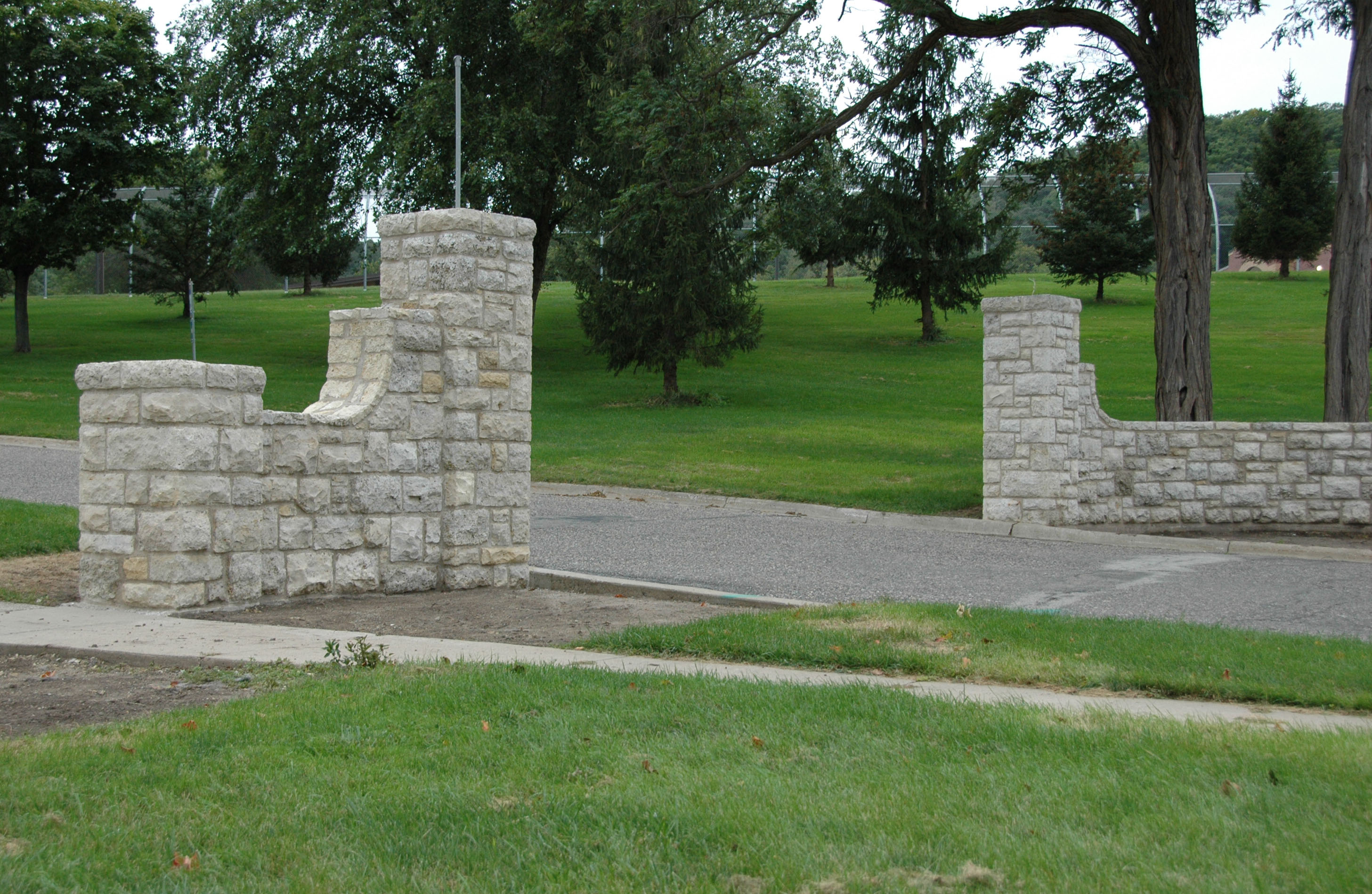 |
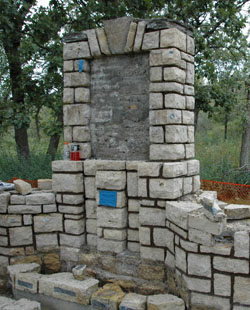 |
Fort Beauharnois Historical Marker/Rest Area
Year built: ca. 1940
Location: Hwy 61 near the town of Frontenac—site of a French trading post built in 1727 on the shores of Lake Pepin
Fact: The Fort Beauharnois historical marker is part of a Class IV Safety Rest Area, which is the most simple of the four classes of Mn/DOT rest areas. They are often on sites of one to five acres and are seasonally operated. They do not have toilet facilities, but typically offer scenic views, historical markers, interpretive information or other points of interest. Mn/DOT operates more than 180 wayside rest stops on non-interstate highways. |
Lake City Concourse
Years built: 1938-1940
Location: Between Hwy 61 and Lake Pepin in Lake City
Fact: Work on the new project includes the addition of a rain garden to help filter runoff and a stone staircase that will lead visitors out to a pier. |
 |
|
|
 |
|

|
 |
TABLE of CONTENTS
 |
Study identifies several potential sites for expanding MnPASS Express Lane system |
By Chris Krueger
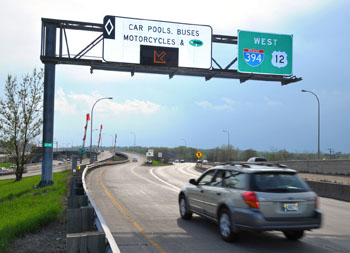
A recent Mn/DOT study identifies specific segments of Twin Cities metro area highways as possible candidates for expanding the MnPASS Express Lane system. Mn/DOT file photo |
A September 2010 study by Mn/DOT recommends several specific segments of the Twin Cities metro area highway system as possible candidates for expanding the MnPASS Express Lane system.
The study supports continuing to use technology, such as Mn/DOT’s new electronic sign system called Smart Lanes, and road pricing to manage traffic congestion. The study comes as Mn/DOT nears completion of the region’s second MnPASS lane on Interstate 35W in November.
“The MnPASS Express Lanes have successfully provided motorists with safe, reliable travel, while providing multi-modal transportation choices,” said Commissioner Tom Sorel. “Extending the system is a cost-effective strategy to manage congestion.”
The study reflects new innovations in design created in part by the Urban Partnership Agreement, a state-federal program to improve traffic flow along I-35W to and from downtown Minneapolis. These innovative designs allow the department to set up MnPASS networks within existing roadway and convert shoulders to express lanes to increase advantages for transit.
The study also supports policies in the Twin Cities metro region’s 2030 Transportation Policy Plan. A draft update of the plan was released by the Metropolitan Council in August, and the council received public comment on the draft through Oct. 7.
“The region will need innovative tools such as MnPASS lanes to manage congestion over the next 20 years,” said Metropolitan Council Chair Peter Bell. “The draft transportation plan suggests a system of managed lanes, including MnPASS lanes and will move more people more effectively by allowing for increased capacity within existing right of way and providing advantages for transit.”
The recommended routes are grouped in three tiers from highest priority (Tier 1) projects that could move forward in two to 10 years based on available funding, to more long-term opportunities referenced in the report as Tier 3. Tier 1 and 2 MnPASS Express Lanes could be built early and in conjunction with other planned construction projects. The roads include:
Tier 1 – Highest short-term priority
- I-35E between I-94 in St. Paul and Hwy 36 Little Canada
Tier 2 – Medium priority
- I-35E between County Road E in Vadnais Heights and Hwy 36 in Little Canada
- Hwy 36 between I-35W in Minneapolis and I-35E in St. Paul
- I-35W between Hwy 36 in Minneapolis to Blaine
- I-94 between St. Paul and Minneapolis
Tier 3 – Longer-term opportunities
- I-494 between Hwy 212 in Eden Prairie to I-394 in Minnetonka
- I-494 between I-394 in Minnetonka and I-94 in Maple Grove
- Hwy 169 between Hwy101 in Shakopee and I-494 in Eden Prairie
- Hwy 77 northbound between 141st Street in Apple Valley and Old Shakopee Road in Bloomington
- I-494 between Hwy 212 in Eden Prairie and the Minneapolis/St. Paul International Airport
The report recognizes several policy issues need careful consideration and analysis as the MnPASS Express Lane system expands. These issues include:
- Establishing a regional consensus on the purpose of the MnPASS Express Lanes, particularly balancing the traditional goal of managing traffic congestion against the possible goal of revenue generation, and the permitted uses of any future revenues
- Ensuring equitable treatment of travelers across the region, particularly if future congestion growth requires that HOVs can no longer use the MnPASS lanes for free
- Working with the state’s partners at the Federal Highway Administration to develop safe and cost-effective designs
- Developing strategies for financing new lanes including use of system revenue and innovative finance
- Considering freight and how it is affected by the MnPASS system
- Ensuring continued advantages for transit
MnPASS Express Lanes currently operate on I-394 between Wayzata and downtown Minneapolis and in two segments on I-35W, from Highway 13 in Burnsville to I-494 and from I-494 to downtown Minneapolis. MnPASS Express Lanes between I-494 and 42nd Street will open in November 2010. Additional MnPASS Express Lanes on I-35W in Burnsville will open in late 2011.
To view the report, visit http://wwwdev.dot.state.mn.us/mnpass/mnpass9-24.pdf. |
 |
|

|
 |
TABLE of CONTENTS
 |
Flagship initiatives on course to deliver |
|
By Stephany Osuji, Office of External Partnering
The Sustainability initiative, Disadvantaged Business Enterprise and Workforce Collaborative, and Americans with Disabilities Act implementation are among the agency’s 12 flagship initiatives making waves this month.
Mn/DOT’s Stewardship Council recently approved a policy for sustainability that defines and develops a framework for implementation, as well as a special provision that will involve DBE businesses earlier in the bidding process. In addition, the ADA transition team recently concluded market research among disabled citizens and their mobility in highway work zones.
More than a year ago, the Stewardship Council identified flagship initiatives to address department-wide issues that fall within the agency’s strategic directions—Safety, Mobility, Innovation, Leadership and Transparency. The flagship initiatives are identified as programs, projects, plans and other activities that move the department toward the destination it hopes to reach.
Sustainability—Transportation for future generations
“Generated in part by the E-magination JAM, the Sustainability initiative explores action steps that Mn/DOT can take to ensure business practices, services and facilities support economic opportunity, community well-being and the natural environment now and for generations to come,” said Cindy Carlsson, Sustainability project manager.
Carlsson said this initiative begins the process of integrating “sustainability” throughout Mn/DOT by:
- Defining what sustainability means for the department and transportation in particular
- Developing a broad framework for assessing risk and establishing priorities
- Assessing and ensuring implementation of E-JAM ideas as appropriate
Serving as a steward to sustainability in the development of the 50-year transportation vision, complete streets planning and other state and national initiatives
DBE and Workforce Collaborative—DBE special provision changes bid process
The DBE and Workforce Collaborative is composed of representatives from Mn/DOT, the Federal Highway Administration and several external stakeholder groups working together to identify and implement strategies to increase diverse workforce and DBE participation on Mn/DOT construction projects.
“This is a significant change in the way we manage our DBE and Workforce programs at Mn/DOT–one that we believe will increase diverse participation on transportation projects and reflect the positive work of the Office of Civil Rights and the DBE and Workforce Collaborative,” said Emma Corrie, workforce and business development project manager.
The requirements with the new DBE special provision include:
- Clearing expectations, timelines and assessments pertaining to meeting/exceeding the DBE goal or Good Faith Efforts
- Modifying the existing three-day provision for the submission of GFE to five days—the Office of Civil Rights will use only this documentation in its determination of GFE
- Requiring the Office of Civil Rights to complete GFE processes within 10-12 business days whenever possible
- Setting a clear process to protect the apparent low bidder’s reconsideration due process rights
The new DBE Special Provision was introduced in the Sept. 24 proposals and will go into effect with the Oct. 22, 2010 letting. The Office of Civil Rights and collaborative project team will evaluate the results of the program changes for a period of up to six months.
“After the evaluation, a decision will be made to either maintain the DBE special provision or consider other steps necessary to achieve the intended goal,” said Mary Prescott, acting director for the Office of Civil Rights.
ADA—Discovering how customers navigate work zones
The Office of Traffic Safety and Technology, in collaboration with the ADA implementation team, recently concluded a market research study on how best to accommodate accessibility for disabled citizens in highway work zones. The study consisted of taking members of the disabled community through work zone set-ups and tested their ability to safely navigate through the zones.
“This was a great outreach effort and the people that participated were appreciative that Mn/DOT is taking seriously its obligation to meet accessibility requirements,” said Kristie Billiar, ADA implementation coordinator. “We are able to build our knowledge base with direct input and share the information with district offices and transportation partners.”
For complete updates on these and other flagship initiatives, visit the Strategic Plan website. |
 |
|

|
 |
TABLE of CONTENTS
 |
Work continues on new financial system |
By Susan Walto, Office of Financial Management
With nine months left before the implementation of SWIFT, the state of Minnesota’s new financial and procurement system, work team members are busy conducting business process implementation sessions.
Project members and business experts comprise the work teams and meet together to review current business processes and practices and then look forward to how those processes will or should change when SWIFT is implemented.
“The meetings are an opportunity for employees to let go of outdated methods and help to develop and embrace their new processes,” said Bill Roen, TranSWIFT project director.
One of the many components being implemented is the asset management module, which will track and account for all the financial data of the state’s assets, including Mn/DOT’s. When the new financial system is up and running on July 1, 2011, the state will have one location for all financial data relating to state assets.
Jerry Wood, Office of Financial Management, is coordinating the effort to look at current business processes relating to asset management and the changes that will be made as part of SWIFT.
“It’s exciting to be moving to a coordinated effort to track assets as a state,” Wood said.
Wood is working with Mn/DOT asset management data stewards to assess how each operational system will be affected by SWIFT. He is also partnering with other TranSWIFT project team members, including Amy Johnson, Office of Financial Management.
SWIFT will be the source of record for financial and accounting data related to assets, while operational data will remain in other applications.
Mn/DOT owns or operates most of the state’s assets, accounting for 79 percent of all state capital assets in fiscal year 2009, according to the state of Minnesota Comprehensive Annual Financial Report. |
For example, data about the operations of Mn/DOT’s fleet will still be in M5, the state’s system to manage mobile equipment. However, the financial data relating to the fleet will be in SWIFT. These two systems will need to “talk” to each other to ensure accurate data is in both systems. The same can be said of other systems that manage and track assets.
“SWIFT is the accounting of assets, not the management of assets,” Wood said.
Mn/DOT owns or operates most of the state’s assets, accounting for 79 percent of all state capital assets in fiscal year 2009, according to the state of Minnesota Comprehensive Annual Financial Report.
“That percentage isn’t surprising when you realize that Mn/DOT’s assets include roadway, bridges, land, mobile equipment and buildings,” said Tom Halverson, chief financial officer. “Starting in July 2011, all the financial data on those assets will be in SWIFT.”
For more information about the TranSWIFT project, including project status, schedule and updates, visit ihub/transwift/ or Work progresses on new financial system (Newsline, Dec. 9, 2009). Employees with questions about the project can contact Bill Roen, TranSWIFT project director, at 651-366-4076. |
 |
|

|
 |
TABLE of CONTENTS
 |
Around Mn/DOT |
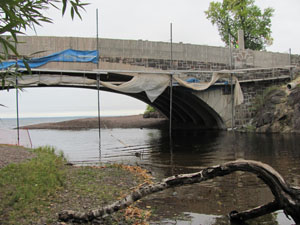
The Hwy 61 Lester River Bridge in Duluth is listed on the National Register of Historic Places. Photo by Michael Kalnbach |
Historic Lester River Bridge reopens
The Hwy 61 Lester River Bridge along Duluth’s North Shore reopened to traffic in September after months of work to restore the historic structure.
The bridge needed a lot of work, including removal of contaminated cinder material, which was used as fill when the bridge was built back in 1924.
“We knew right up front that we would need to get that out of there and dispose of it properly,” said Michael Kalnbach, District 1 project engineer.
In addition to replacing the fill, Kalnbach’s team removed the stone railing and bridge deck, waterproofed the existing arch, constructed a new bridge deck and salvaged as much of the stone railing as they could.
The bridge is 165 feet long and is listed on the National Register of Historic Places.
October is General Aviation Appreciation Month
Earlier this month, Gov. Tim Pawlenty declared October “General Aviation Appreciation Month.”
Minnesota is home to 155 commercial and general aviation airports, serving 13,529 pilots and 7,806 general aviation aircraft. There are also 31 charter flight companies, 55 repair stations, 13 flight schools and 102 fixed-based operators located throughout the state.
“General aviation is a tremendous economic engine for the state of Minnesota and it continues to be a vitally important industry that brings many benefits to everyone,” said Chris Roy, Aeronautics director. “Aviation is an integral part of conducting business, moving cargo and traveling for leisure.”
New Library Materials posted on Web
The September 2010 edition of New Library Materials is now available at http://www.dot.state.mn.us/library/newlibmat.html.
In September, library staff bid farewell to Barb Hogan, who retired after working 32 years at the library. Check out the latest New Library Materials to find out what Hogan had to say about the most memorable events during her time at Mn/DOT.
New Library Materials is a compilation of new titles and other resources added to the library collection during the previous month. If you would like to be added to the distribution list, please contact Pam Gonzalez at 651-366-3749.
For other information requests, contact the library at 651-366-3791 or e-mail library.dot@state.mn.us. Employees can also send requests via the “Ask a Librarian” Web page at http://ihub.library/asklibrarian.html or http://www.dot.state.mn.us/library/asklibrarian.html. |
 |
|

|
 |
TABLE of CONTENTS
 |
Everyday efforts contribute to Minnesotans’ quality of life |
By Commissioner Tom Sorel
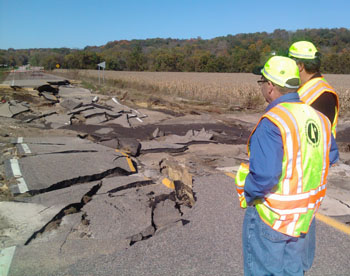
Commissioner Tom Sorel and Deputy Commissioner Khani Sahebjam view flood-damaged Olmsted County Road 14 in southeastern Minnesota Sept. 29. Photo by Kevin Gutknecht |
Every day I look around and see proof of how the work Mn/DOT employees do affects the quality of life of all Minnesotans. The recent flooding, especially in District 6, District 7 and the Twin Cities area, is a case in point.
Heavy rains and massive flooding in late September required the closing of more than 100 state and local roads. Mn/DOT maintenance employees and engineers, emergency management staff and public affairs coordinators worked around-the-clock with our city and county partners to ensure the safety of the travelling public. Their efforts included creating detour routes and directing traffic, assessing the levels of damage done to our transportation infrastructure and providing consistent and up-to-date information.
Although the immediate emergency response is over, much remains to be done as we continue to assess and repair the damage—currently estimated at more than $60 million—and look for ways to mitigate the effects of any future flooding on the state’s transportation system. In doing so, I am confident that Mn/DOT employees will continue to bring the same level of dedication and service to improving the quality of life for the people and communities of Minnesota.
Letters of appreciation
But it’s not only floods (or tornadoes like we had in Wadena or the multiple snowstorms we face each winter) that bring out the best in our workers. Mn/DOT employees do great work in the ordinary course of their day-to-day jobs, and I’d like to share some comments I received recently from two motorists who were appreciative of Mn/DOT’s efforts.
The first comes from a woman whose car blew a tire near Hwy 280 and westbound Interstate 94 in St. Paul. She drove across three lanes of traffic to pull her car off the road as much as possible (there is no shoulder there) and called 911.
“…And to my surprise, two MnDOT trucks quickly arrived, one with the big arrow to warn drivers to move out of the lane, and the other with a very fast and helpful employee who actually changed my tire. I did not expect that, asked if there was a charge, and then asked if I could tip him. He was sweet, efficient and kind, and refused all money, saying with all smile “this is your tax dollars at work.” I am sorry I did not get his name, he deserves my thanks and some recognition. I have told this story to strangers and friends alike, with much appreciation.”
-Lisa T.
And with the I-35W/Crosstown project set to officially be completed within the next few weeks, we’re already receiving some positive reviews. Here’s one from a driver from Northfield:
“Today I drove I35W northbound and was quite pleased with the new interchange between 35W and crosstown 62. The new lanes were open and I eased through the weavings with a smile on my face. Thanks to all those who have long planned for the improved interchange. Safety, ease and simplicity will prevail! I look forward to the completion of all the construction. Thankfully, I can begin to see how it will all work. This has been years in the planning and well work the effort. Thanks to all who have been involved. Please pass this on to whomever you think needs kudos!”
|
 |
|
| |
|



